
The High Energy X-Ray Experiment (HEXE) was built and operated in close collaboration of MPE and the Institut für Astronomie und Astrophysik der Universität Tübingen (both in Germany). It was used during three successful balloon campaigns (May 1980 and September 1981 launched from Texas (USA), as well as November 1982 lauched from Uberaba (Brazil)) to observe X-ray sources. HEXE was the successor of a detector also built and operated by MPE and AIT, with which the famous cyclotron line in Her X-1 has been discovered.
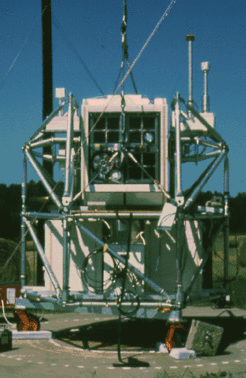
Close to the center of this picture, the four detector units within the white square are visible. the two upper and the right lower unit are the Phoswhich detectors, the lower left is the Germanium detector.
Below the detectors are the electronics boxes of the detector units, the data transmission units and the electronics that aims the ballon gondola and the detectors towards celestial objects. All the electronics boxes are shielded against the extrene low temperatures in floating altitude (40 km). The detectors will also be covered by thermal isolation.
The picture was taken during a calibration setup a few days before launch when the magnetometers were calibrated within the Earth magbetic field. The magnetometers are used during flight to determine the attitude of the balloon gondola.
The detector units were aimed towards the observer when the picture was taken. By rotating the detector block around a horizontal axis and a vertical axis, all parts of the sky above horizon can be aimed at with the instruments.
Balloon campaign in Texas (USA) May 1980:
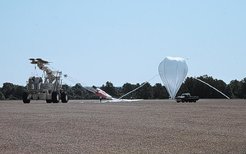
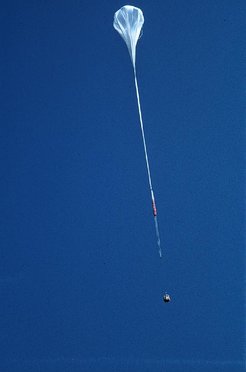
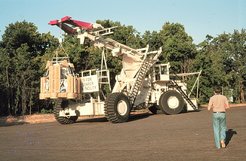
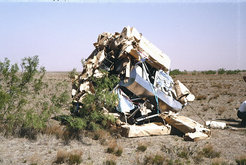
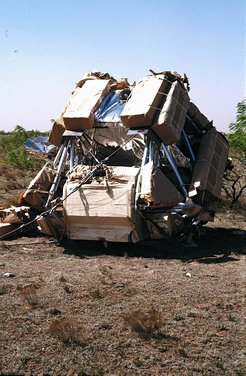
Statistics of the three launches
| 1980 | 1981 | 1982 | |
| Place | Palestine, Texas (USA) |
Palestine, Texas (USA) |
Uberaba (Brasilia) |
| Launch Team | NCAR | NCAR | INPE/NCAR |
| Seize of Balloon | 0.97 Mio. m3 | 1.33 Mio. m3 | 0.97 Mio. m3 |
| Payload Weight | 1360 kg | 1500 kg | 1500 kg |
| Launch | May 9, 16:07 UT |
September 28, 12:30 UT |
November 25, 12:30 UT |
| Float Altitude | 39 km | 40 km | 39 km |
| Flight Duration at Float | 46 hrs | 22 hrs | 1 hr (hole in balloon) |
| Remarks | After landing the parachute did not separate from the gondola and pulled it several miles across dry farmland. | The gondola with the scientific instruments landed safely. | Due to a hole in the balloon the flight was aborted soon after reaching the desired altitude. No scientific measurements have been possible. |
A space-proof version of a section of the HEXE was operated since 1987 on board the Russian space station Mir (Mir-HEXE) until the de-orbiting of Mir on March 23, 2001.
last update 2013-08-14 by H. Steinle





